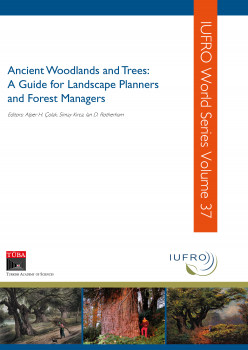The Cultural Heritage of Woods and Forests

The Cultural Heritage of Woods and Forests
Contrary to popular belief, our ancient woodlands in Britain and across much of Europe, are not ‘wildwoods’, nor even are they remnants of a ‘wildwood’. These truly cultural landscapes mix nature and human history, woven together as a unique and rich tapestry of ecology and history (Rackham, 1976, 1980, 1986, 2006; Smout et al., 2005). The story of the woods is there to be ‘read’ if you have the time, the enthusiasm. The types of landscapes, the geology and the climate, and even to differences in industries and in manufacturing history, have placed varying demands on woods resulting in strong regional distinctiveness. This eco-cultural evolution led to woods with strong, local character depending on the ecological types of woodland present originally, and then varying uses over the centuries. From South Yorkshire’s wood colliers, to the Chilterns bodgers, the tanbark merchants of Cumbria, and the clog makers of North Yorkshire, they each left a unique and indelible footprint in the landscape (Jones, 2003, 1998; Jones and Rotherham, 2012; Jones and Walker, 1997).The crafts and the evidence in the woods of former activities are a unique cultural resource, and like many such aspects of living heritage, are under imminent and on-going threat. In order to safeguard this unique heritage, essentially a living landscape, you first need to find it, and then recognise it, and then care for it (Rotherham, 2013b).
There is widespread popular and academic interest in woodlands, their history and the associated archaeology (Rackham, 1986; Rotherham et al., 2012; Muir, 205; Peterken, 1981; Hayman, 2003; Fowler, 2002; Perlin, 1989; Hare, 1998). However, there is currently very little literature that addresses the history, heritage and archaeology of woods in a coherent and holistic way. With the publication in 2008 of the Woodland Heritage Manual (Rotherham et al., 2008), there is now an accepted approach to this subject across Europe and even in the USA, and the interest in this long-neglected field is growing rapidly. The subject covers a wide range of topics from extractive industries in woods to the crafts based on the extraction or harvesting of woodland products and their processing. For centuries, these crafts were at the centre of British and European societies and cultures, and were fundamental in the creation and protection of many landscapes that we value today.
However, as technologies changed and as markets for products evolved, many of the woodland traditions and crafts were abandoned and forgotten; just a few surviving to the present day. However, the footprints of these craftsmen are indelibly etched into every ‘ancient wood’ across the continent. The only problem then is in recognising and understanding the evidence. Even the woodland wild flowers and their distributions reflect the one-time uses of the sites, as do the formerly ‘worked’ trees; even the humps and bumps of soil now present as archaeology. These woods contain uniquely rich diversities of ‘features’, ancient and modern, from Bronze Age carved stones, to hilltop enclosures and field systems, woodbanks and ditches, trackways, charcoal platforms, Q-pits, bell-pits, quarries, building platforms, and more (e.g. Ardron and Rotherham, 1999; Rotherham and Ardron, 2006; Rotherham, 2007a). The heritage includes archaeology ‘in’ the woods and archaeology ‘of’ the woods. The former is the mix of features protected in the landscape because in the wooded area there has been only limited gross disturbance and destruction. The latter is the heritage associated directly with woodland management and resource use.
This chapter introduces ideas and concepts of the cultural landscapes of wood and forest. It develops approaches to ‘reading’ the evidence of species, archaeology and other heritage. Conservation issues and concerns are also introduced.
